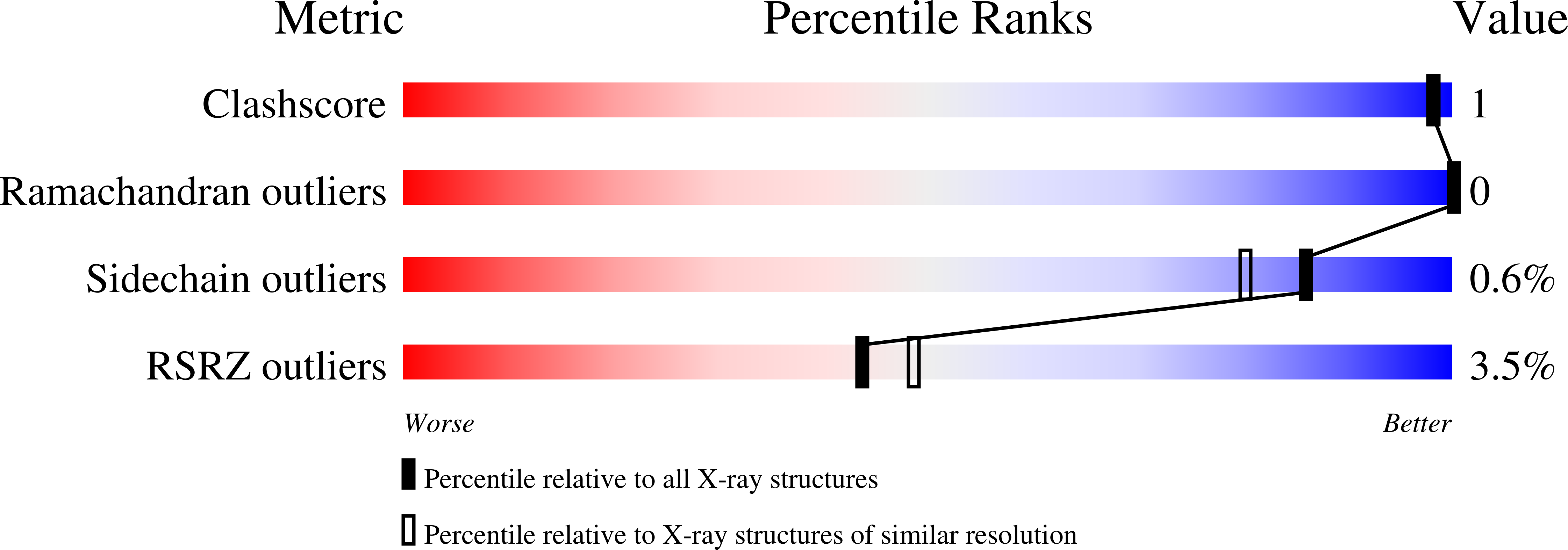Identification of Macro Domain Proteins as Novel O-Acetyl-Adp-Ribose Deacetylases.
Chen, D., Vollmar, M., Rossi, M.N., Phillips, C., Kraehenbuehl, R., Slade, D., Mehrotra, P.V., von Delft, F., Crosthwaite, S.K., Gileadi, O., Denu, J.M., Ahel, I.(2011) J Biol Chem 286: 13261
- PubMed: 21257746
- DOI: https://doi.org/10.1074/jbc.M110.206771
- Primary Citation of Related Structures:
2X47 - PubMed Abstract:
Sirtuins are a family of protein lysine deacetylases, which regulate gene silencing, metabolism, life span, and chromatin structure. Sirtuins utilize NAD(+) to deacetylate proteins, yielding O-acetyl-ADP-ribose (OAADPr) as a reaction product. The macrodomain is a ubiquitous protein module known to bind ADP-ribose derivatives, which diverged through evolution to support many different protein functions and pathways. The observation that some sirtuins and macrodomains are physically linked as fusion proteins or genetically coupled through the same operon, provided a clue that their functions might be connected. Indeed, here we demonstrate that the product of the sirtuin reaction OAADPr is a substrate for several related macrodomain proteins: human MacroD1, human MacroD2, Escherichia coli YmdB, and the sirtuin-linked MacroD-like protein from Staphylococcus aureus. In addition, we show that the cell extracts derived from MacroD-deficient Neurospora crassa strain exhibit a major reduction in the ability to hydrolyze OAADPr. Our data support a novel function of macrodomains as OAADPr deacetylases and potential in vivo regulators of cellular OAADPr produced by NAD(+)-dependent deacetylation.
Organizational Affiliation:
Department of Biomolecular Chemistry and Wisconsin Institute for Discovery, University of Wisconsin, Madison, Wisconsin 53706, USA.















